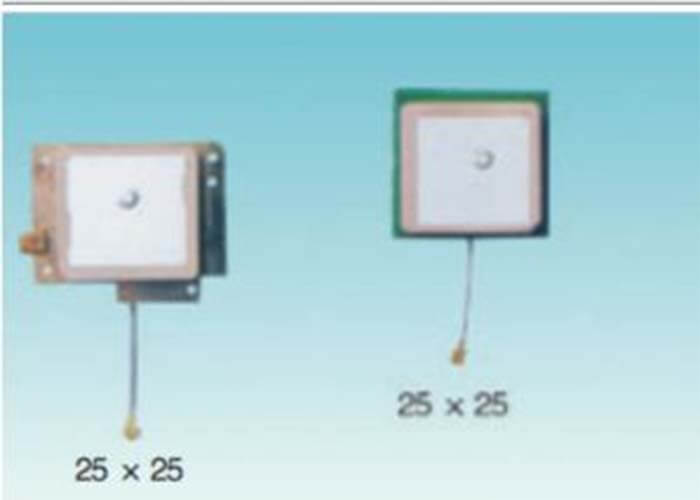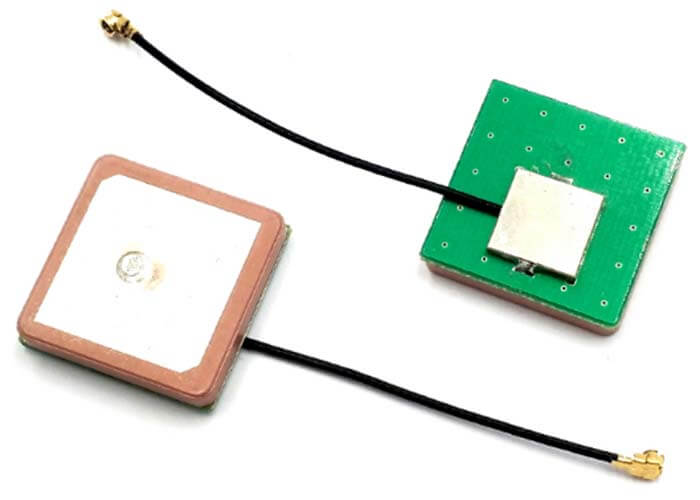
Regarding the performance of active vs passive GPS antenna, both GPS passive antennas and active GPS antennas can receive GPS signals and achieve the satellite positioning function. But usually, the GPS active antenna is better than the passive GPS antenna, and the positioning speed active vs passive GPS antenna is faster.
GPS is to receive satellite signals for positioning and wayfinding navigation, and the reception of satellite signals must be used antennas. And GPS positioning accuracy and the stability of the satellite signal are placed with the antenna, and the internal craft will affect the effect of the navigator to receive satellite signals.
From the antenna placement, the GPS antenna can be divided into the built-in antenna and an external antenna; and GPS built-in antenna can be divided into the active and passive antenna.
In the GPS antenna unit design, the high-frequency, low-noise amplifier is used to reduce the thermal noise of the GPS antenna and the impact of the preceding stages of the unit circuit on the receiver performance;
In the GPS antenna principle, using GPS satellites to achieve navigation and positioning, the main job of the GPS device user receiver is to extract the pseudo-random noise code and data code in the satellite signal. To solve further the receiver carrier position, speed, time (PVT), and other navigation information.
The GPS receiver is crucial user equipment. We often say that the navigation map includes the navigation map running software and navigation map mapping. The mapping is the specific geographic location characteristics and rich POI points of interest. In contrast, the navigation map running software carries the navigation map mapping and will run effectively for car users.
Point of interest is also known as POI (Point of interest). The map manufacturer includes the information point to facilitate car users to find the corresponding destination, such as restaurants, buildings, etc.
At present, the actual application of the GPS receiver circuit generally consists of four parts, such as an antenna unit, an RF unit, a communication unit, and a decryption unit. In this paper, based on the analysis of the composition of GPS satellite signal, the Active vs Passive GPS Antenna principle and Active vs Passive GPS Antenna application of RF front-end GPS are given.
Composition of Active vs Passive GPS Antenna satellite signal
The GPS satellite signal is synthesized by the standard Code Division Multiple Access (CDMA) modulation technology. Its complete signal mainly includes three components: carrier, pseudo-random code, and data code. The signal carrier is in the L-band, and the center frequencies of the two carriers are noted as L1 and L2, respectively. f0, the reference clock frequency of the satellite signal, is 10.23 MHz, and the center frequency of the signal carrier L1 is 154 times the frequency of f0, i.e.
fL1=154×f0=1575.42MHz (1)
Its wavelength λ1=19.03cm; the center frequency of signal carrier L2 is 120 times the frequency of f0, i.e.
fL2=120×f0=1227.60MHz (2)
Active vs Passive GPS Antenna principle
The frequency difference between the two carriers is 347.82MHz, which is about 28.3% of L2. The carrier frequency is easy to measure or eliminate the propagation delay error caused by the ionospheric effect when the navigation signal is propagated from the GPS satellite to the receiver.
The pseudo-random noise code (PRN), i.e., ranging code, mainly has two kinds of OK ranging code (P-code) and coarse ranging code (C/A code). The code rate of the P-code is 10.23MHz, and the code rate of the C/A code is 1.023MHz.
The data code is the navigation and positioning data sent by GPS satellites to the user receiver in binary form, also called navigation message or D code, which mainly includes satellite calendar, satellite clock correction, ionospheric delay correction, working status information, C/A code conversion to capture P-code information and the approximate ephemeris of all satellites;
The total message consists of 1500 bits, divided into five subframes. Each subframe transmits ten words in 6s, each word 30 bits, a total of 300 bits. Each word is 30 bits, a total of 300 bits, so the baud rate of the data code is 50bps.
Active vs Passive GPS Antenna application
GPS antenna plays a vital role in agriculture, aviation, environment, shipping, public safety, disaster relief, railroad, space, survey, mapping, etc.
Active vs Passive GPS Antenna characteristics
What are the characteristics of active vs passive GPS antennas? It has high positioning accuracy and fast receiving speed; and can be divided into active and passive, so what is the difference between these two?
Passive GPS antenna of Active vs Passive GPS Antenna

When using a passive GPS antenna, there is only one ceramic piece to receive the satellite signal from the sky, which is directly connected to the RF-IN pin of the module. This connection is simple in structure. The standard 25*25*4 ceramic piece is low cost, mature in technology, minor in volume, suitable for compact space GPS navigation products, Bluetooth GPS, cell phone GPS, and other small GPS consumer products.
The layout of this antenna is from the antenna pins directly to the RF-IN pin of the module. The wire needs to be 50 ohms impedance matching, and there cannot be electromagnetic interference near the antenna.
The PCB design and EMI design of the whole machine requirements are high.
If the design is an excellent passive antenna, GPS products also have an excellent performance effect. That can save power consumption a lot.
The omnidirectional passive GPS antenna has a rubber duck and fiberglass antenna, which the Omni GPS antenna can directly install on the GPS tracking device.
There are also passive GPS PCB antennas, passive flexible PCB GPS antennas, small size, small footprint, good performance, high GPS signal transmission, and reception, and easy to install. Built-in passive GPS antennas are good for your choices.
Active GPS antenna of Active vs Passive GPS Antenna
Usually for the device or vehicle-mounted machine, as there is often a distance before the device and GPS receiver module, considering the convenience of installation may be more than 1-meter distance.
In this case, we can only choose an active GPS antenna due to the length of the antenna signal attenuation needs to be compensated.
There is generally a two-stage low-noise amplifier (LNA) for antenna front-end signal amplification, the amplified signal through the cable output. The cable is synchronized to provide the DC voltage required by the LNA.
As the signal received by the antenna completes the signal reception and antenna amplification in the active antenna receiving side and far from GPS equipment or other electrical equipment, the source of interference is minimal. The installation location can choose an ideal environment due to the extended antenna distance, so the actual use of the signal often feels stronger.
Active GPS antenna has a ceramic antenna, vehicle GPS antenna, marine GPS antenna, etc.
Besides the Active vs Passive GPS Antenna article, you may also be interested in the below articles.
What is the difference between WIFI and WLAN?
Summary of 41 Basic Knowledge of LTE
What Is The 5G Network Slicing?
